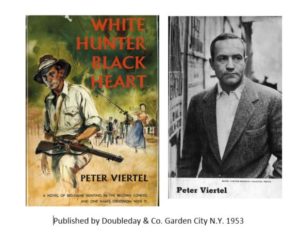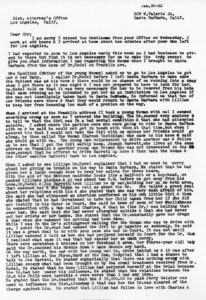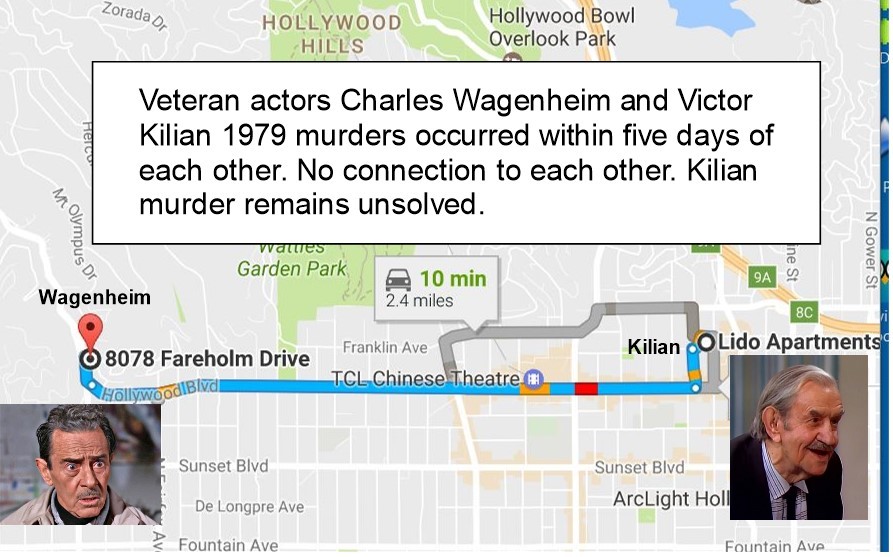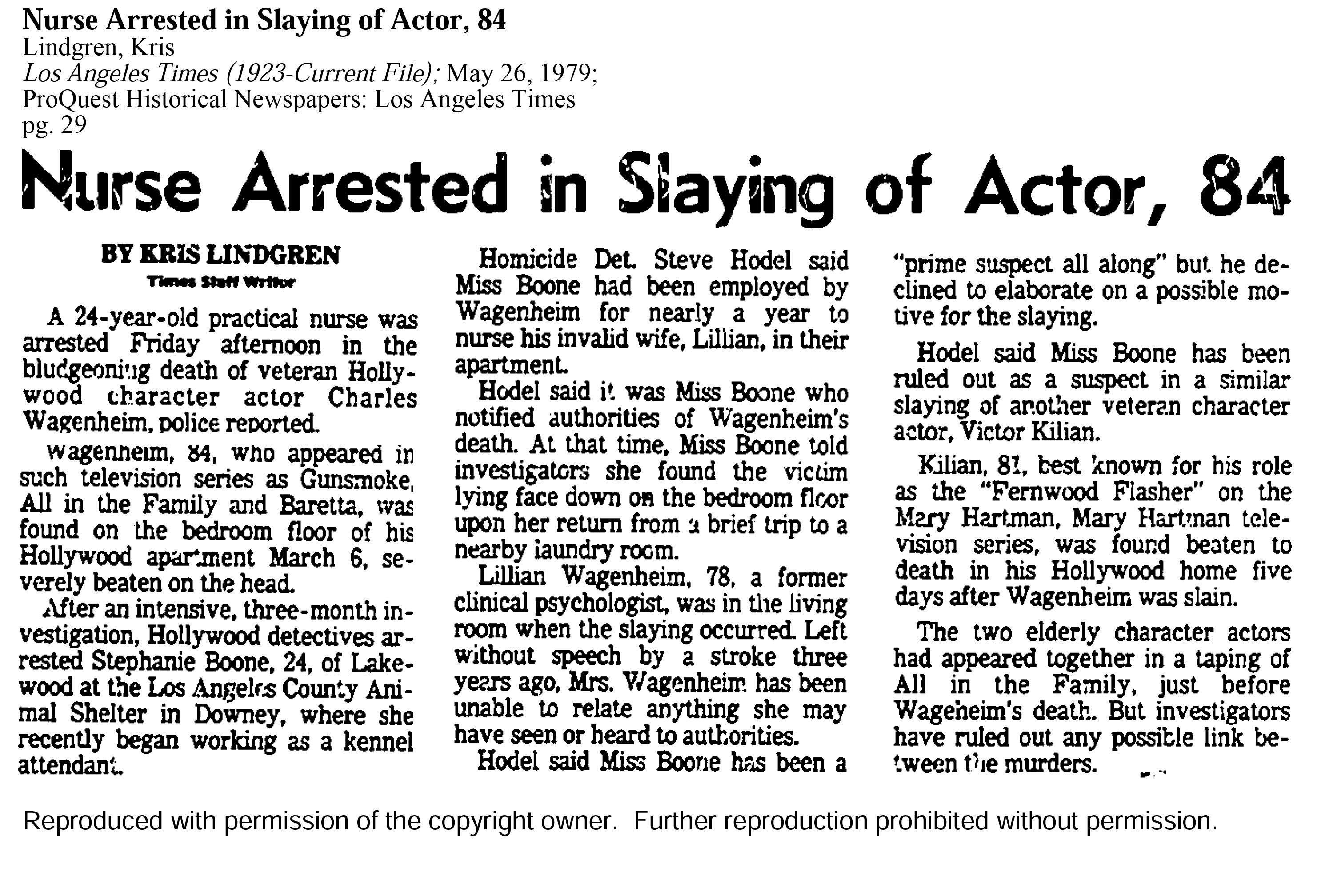Los Angeles, California
October 29, 2016
(Updated from FAQ 42 originally published June 4, 2007)
Q: I recently saw the movie, WHITE HUNTER BLACK HEART which is supposedly based on the life of the director, John Huston and the making of the film, AFRICAN QUEEN. Did you see the movie? What did you think of it?
I did see the film WHBH when it was released about fifteen years ago. Normally, I am a big fan of Clint Eastwood and his movies, but this one did not do it for me. In my opinion, the film gave a distorted view of Huston due to time constraints. Since you have seen the movie, my advice to you would be to read the book.”
Screenwriter/author, Peter Viertel wrote a gripping novel, which was originally published in 1954. A Roman a clef, Viertel simply changed a few names, calling John Huston, John Wilson and moved forward with a dramatic narrative. Viertel documents his close friendship with John during the early Fifties and the making of AFRICAN QUEEN, and gives us a full, and in my opinion fair view of the real Huston. We see and hear both sides; Huston’s shining genius along with his dark-sided views of life, which gained Huston the well-earned reputation of being both, “A Genius and a Monster.”
Having had a father of similar character, with tremendous strengths, and weaknesses, who was both generous and sadistic in nature, in recently re-reading the “novel” I felt I better understood Viertel’s expressed love and disgust for Huston. John was a serpent who hypnotized his prey with charm and humor, then struck quickly and sank his fangs deep into his victim’s flesh.
![viertel-white-hunter-black-heart]()
In rereading WHBH in the light of what is now known about George Hodel some quotes attributed by Viertel to John Wilson (Huston) take on much deeper meaning. As you read the first comments on Huston’s view and attitude on testing “friendship” keep two things in mind. First, George Hodel and John Huston were friends since high-school, and second, John’s observations are made circa 1951-1952, just after George Hodel was about to be arrested and decided to flee the country. As we now know, George was fleeing from being apprehended for the commission of a cold-blooded, premeditated murder. (Several actually.)
Here are Huston’s comments on “Real Friendship.”
White Hunter Black Heart, page 64: …
“No, it’s not. To try and find out who your real friends are is very important. “ “How would you propose to go about doing that, John? Randsome asked. ‘
“Well, I don’t know. It’s kind of difficult. I think the perfect test would be to go to your friends and tell them you’ve just committed a murder, a cold-blooded, premeditated murder, and that you want to escape. There are no extenuating circumstances. All you want is help. The people who’d stick to you and help you escape without asking any questions would, I believe qualify as real friends.”
The next comments related to my mother, Dorothy, John’s first wife. (They were married 7 years. The “I’d done something wrong” refers to mother walking in and catching him in bed with another woman fairly early on in their marriage.)
White Hunter Black Heart, page 214:
… “I believe in the signs, you know. I’ve met them too often in my life to doubt them. In everything I’ve ever done. Work, or women, or gambling. Everything.”
“How do you mean?”
“Well, when I broke up with my first wife for instance. I knew I’d lost the best dame I was ever likely to meet, and I’d lost her because I’d acted like a horse’s ass. And it turned out that way. I’d done something wrong and I had to pay for it, and so every time I fell in love again after that, I knew the disenchantment would ultimately turn up. And it did. Never failed. Because you get one good chance at everything in life, and that’s all.”
Finally, I believe the below comments are the most telling of all, and capture John’s true psychology. It is exactly the kind of thinking that differentiates many geniuses from us “mere mortals.” It is dangerous, over the edge, and guaranteed to fill one’s life with excitement, adventure, and in all likelihood misery and disappointment. I make no moral judgment here. Those, like John Huston and George Hodel, make a choice with eyes wide open. Their thinking compels and propels them forward into the Abyss.
White Hunter Black Heart, page 295-296:
(The below conversation is between Peter Viertel and John Huston. They are in Africa and far behind schedule on the filming of AFRICAN QUEEN. Screenwriter and close friend of Huston’s, Peter Viertel is attempting to dissuade Huston from going on an elephant hunt. )
Viertel’s says:
“Well, in order to kill one of them, you’re ready to forget the rest of us, and let the whole goddam show go down the drain. It’s not a passion this time that’s guiding you, that’s pulling you away from your responsibility. A passion would be an excuse. This time it’s a crime. Because it’s a crime to kill an elephant. And in order to commit this crime you’re willing to ruin everyone else. If you were running out on the picture because of a woman, or a better offer, or because you’d suddenly gotten bored with the whole thing, I’d go along. But this way, it’s even too rough for my taste.”
Wilson looked intensely serious for a minute. He drew reflectively on his cigarette. I knew something I had said had made an impression on him. Most of it, I realized, had gone past him into the warm African night, but something had struck him in the strange way it occasionally did, had pierced into his armor-plated process of thought. He was pausing now to give his answer weight. I knew him so well, I thought.
“Kid,” he said, after a long pause, “you’re wrong. It’s not a crime to kill an elephant. It’s bigger than that. A crime….what the hell, that isn’t much. And that isn’t it. It’s a sin to kill an elephant, you understand, a sin. As basic as that. The only sin you can buy a license for and then go out and commit. And that’s why I want to do it before I do anything else. You understand?”
Bottom Line: READ THE NOVEL.
SKH Note- Thirty years later, Viertel (by then long married to actress Deborah Kerr), wrote another book called, Dangerous Friends: At Large with Hemingway and Huston in the Fifties. Also a great read and adds further insight into these two remarkable men.
![huston-welles]()
John Huston and Orson Welles
For those interested in learning more about the writings of Peter Viertel, I would recommend the excellent Fan Website just discovered by me at:
Peter Viertel Website
The post John Huston, Peter Viertel: White Hunter Black Heart (On Friendship and Cold Blooded, Premeditated Murder) appeared first on Steve Hodel.













































































































































